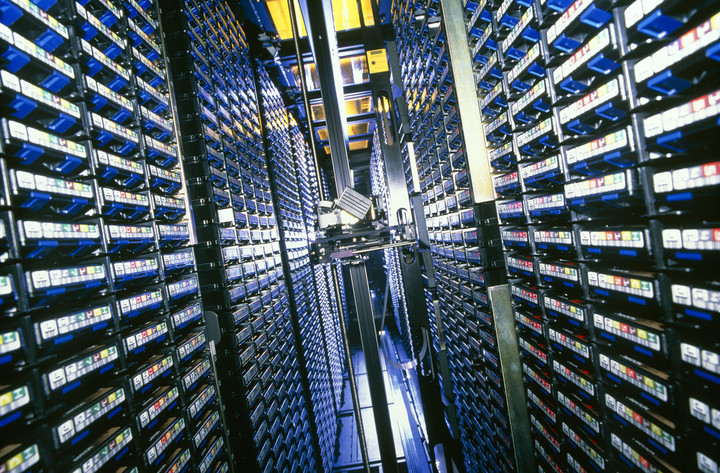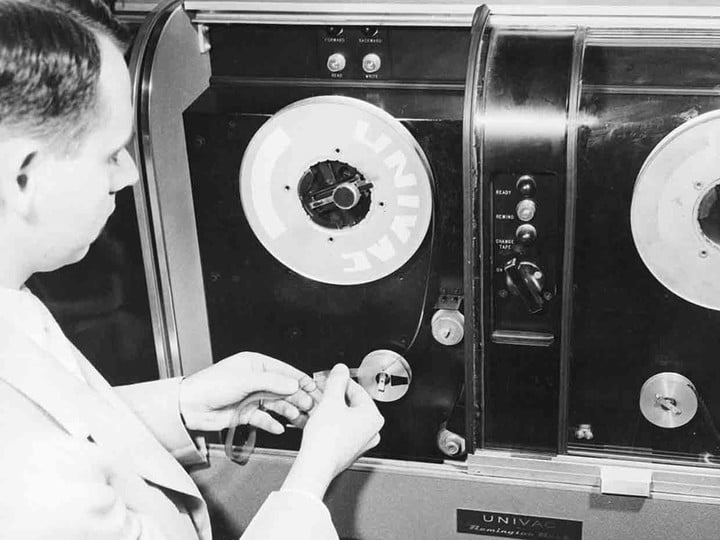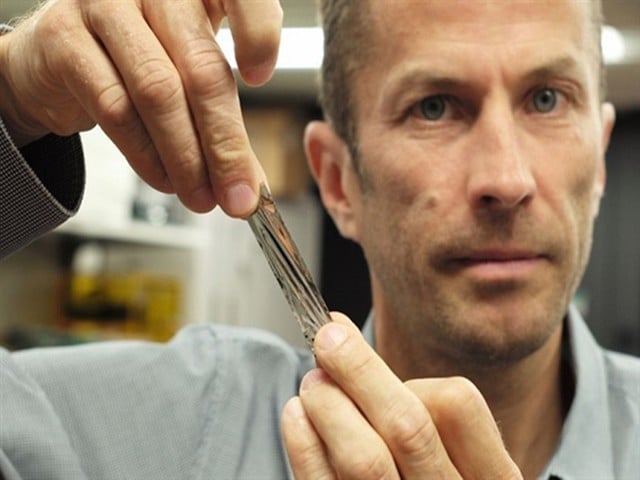The memory of today’s smartphones is getting bigger and bigger, and global data storage will soon show an “out of memory” warning.
According to software company Domo’s report, people averaged 383 on Google every 2018. Millions of searches, watching 4.33 million videos on YouTube, sending 159,362,760 emails, 473,000 Twitters, and 49,000 photos on Instagram.

In China, the amount of information sent on WeChat every day exceeds 45 billion articles. Domo expects global per capita data to generate 1.7 MB per second by 2020.With a global population of 7.8 billion, then 418 ZB of data will be generated in a year, requiring approximately 418 billion 1TB hard drives to be installed.
This does not take into account the population growth trend, the United Nations expects the world population to be able to breakthrough by 2050 9.7 billion. This means that existing data storage systems will not be available until the next century.

▲ i Image from: United Nations
The explosive growth of data is forcing humans to find better data storage technologies. Some people try to store global data with 1 kilogram of DNA. Microsoft has developed a “glass disc” that can be used for thousands of years. However, the most technologically advanced technology companies are still using tape to store data.
Human civilization has been rushing for more than 5,000 years, but the longest lifespan of available storage media is now at most About 60 years, where is the future of data storage?
In 9102, why are technology companies still using tape to store data?
InMany people have the impression that the tape is like an antique of the last century. After many 80s and 90s, they still bought tapes to support their idols. Ren Xianqi’s album “Heart is too soft” released in 1996 broke through 10 million.

However, as CDs, MP3s, and smartphones have become popular in the music market, tape has become a memory of a generation, and it is hard to find in life. Tape is not dead, but instead becomes the most competitive storage medium in the era of big data.
Technologies, including Google, Amazon, and Microsoft, are still using tape to back up massive amounts of data. Why not use mechanical hard disk (HDD) and solid state hard disk (SSD) instead, instead use tape to store data?

The most important reason is still cheap. These technology companies have hundreds of millions of users and the amount of data they need to store is huge. Although cloud computing is the future trend, for companies providing Internet services, it is still necessary to store data locally, which will be a significant cost.
Although tapes are read much more slowly than hard drives and semiconductor storage. But the cost is much lower. A 1 TB mobile hard drive costs about $50, and a tape of the same capacity costs just $5.

▲The 1951 tape was first used for computer (Univac) data storage
And the tape is more durable than the hard drive, generally hard disk life Under 10 years, it will be copied to the new hard disk every few years. The copying of massive data is not only time-consuming, but also easy to lose data, and the tape can be stored for decades.
In addition, the tape only needs to be inserted into the slot of the mechanical tape library during use. It does not need to consume electricity and saves a lot of electricity costs. It is known that the global data center’s electricity bill will exceed 10 billion US dollars in 2025.

For many companies, the security of data storage is often important. Because the tape is inaccessible without a driver installed, this offline state isolates hackers and cyber attacks and is not easily lost and tampered with.
In 2011, Google Mailbox GMail Because of a bug in an update accidentally deleted more than 40,000 emails Although Google has been using a hard disk to store data copies in multiple data centers, some data cannot be recovered. Fortunately, this data is also backed up to disk, so that all data can be recovered.

▲ Image from: Business Insider
Therefore, in addition to technology companies, many companies and organizations that have high requirements for data security are still using disks to store data. Such as banks, insurance companies, countriesArchives, as well as research institutions, including the National Aeronautics and Space Administration (NASA).
But tape is not a data storage carrier that sacrifices efficiency because of security and cost. The development of tape technology has exceeded the imagination of many people.
In 2014, Sony used the self-developed sputtering thin-layer deposition technology to lay 7.7nm ultra-fine magnetic particles on magnetic tape, achieving high-density magnetic storage with a storage capacity of 185TB.

▲IBM capacity 330TB tape
IBM has a dedicated research team in Zurich, Switzerland to promote tape technology, according to team scientist Mark According to A. Lantz, IBM solved the problem of storing 201 gigabytes per square inch in 2017 and increased the capacity of single-cassette tapes to 330 TB by introducing Sony’s sputter thin-layer deposition technology.
Editor’s Note: 1 square inch = 0.00064516 square meters
More importantly, tape storage capacity has grown at a rate of 33% per year for many years and there are no signs of slowing down. Information Storage Industry Association (INSIC) predicts that tape storage density will reach 91 GB per square inch in 2025 and will exceed 200 GB per square inch by 2028.

▲ Image from: Quartz
The speed of the magnetic recording density of the hard disk has dropped to 10-15%, because when the storage density of the hard disk reaches a certain limit, it is difficult to maintain the magnetic stability by reducing the size of the magnetic particles. This is called superparamagnetic limit.
According to IDC data, the Internet is large The data is growing at a rate of 30%-40% per year, and currently hard